July 8 Monday: Grozny, Chechnya – Makhachkala, Dagestan
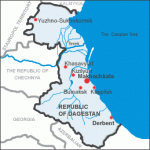 We were at the border around 11am. The atmosphere changed: an official from the Dagestan Republic got on board and checked our passports. This gave me a strange and somewhat uneasy feeling for the first time since the journey began in North-Ossetia on June 28. I saw a Red Cross vehicle on the road for the first time. We passed through Khasavyurt, a thriving but messy town lined with shopping malls, markets and vehicle repair shops. Accompanied by Adam and Abraham, our coach from Chechnya took us all the way to the hotel in Makhachkala, the capital of Dagestan. We sadly bid farewell to our Chechen friends and driver at 1:30pm.
We were at the border around 11am. The atmosphere changed: an official from the Dagestan Republic got on board and checked our passports. This gave me a strange and somewhat uneasy feeling for the first time since the journey began in North-Ossetia on June 28. I saw a Red Cross vehicle on the road for the first time. We passed through Khasavyurt, a thriving but messy town lined with shopping malls, markets and vehicle repair shops. Accompanied by Adam and Abraham, our coach from Chechnya took us all the way to the hotel in Makhachkala, the capital of Dagestan. We sadly bid farewell to our Chechen friends and driver at 1:30pm.
Dagestan bordered on its eastern side by the Caspian Sea is the southernmost part of Russia. It is Russia’s most heterogeneous republic with some 35 separate ethno linguistic groups and the region contains 12 language families. Its ethnical and cultural diversity is attributed to its mountainous terrain which has impeded travel and communication. All non-Russian ethnic groups are Muslim. Russian became the principal lingua franca during the 20th century. Unlike most other parts of Russia, Dagestan’s population is rapidly growing.
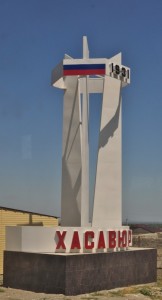 |
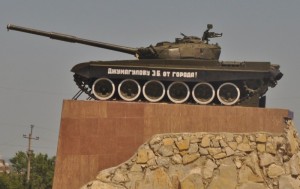 |
Dagestan has been described as a troubled region and an unsafe tourist destination. The republic is still largely tribal and the mountainous areas have seen major military operations between various groups and the Russian military. In 1999, a group of Chechen Muslim fundamentalists led by warlords Shamil Basayev and Ibn Al-Khattab launched a military invasion of Dagestan aiming at the creation of an “Independent Islamic State of Dagestan”. The Dagestanis viewed them as invaders and unwelcomed religious fanatics. Russian military helped Dagestanis drive the Chechens out of Dagestan.
Makhachkala located on the western shore of the Caspian Sea was founded as a fortress of the Russian Empire in 1844. The Avars and Laks are the largest ethnic groups in the capital which has a population of about 580,000. Makhachkala has been affected by Islamist insurgents as part of a republic-wide conflict since the fall of the Soviet Union in 1991.
Our hotel built during the Soviet era retains the austere and Soviet atmosphere. The reception area is shabby with the receptionist sitting behind a room with a tiny window. The lady in charge of the lift only allowed those staying on 3rd floor and above to take the lift which can only take 2-3 persons. Another sturdy lady takes charge of each floor. Her job is to hand me a key upon presentation of the hotel card. The rooms are small, barely furnished and without curtain. The air-conditioner is old and noisy. We had to ask for a toilet roll.
At 3pm, we boarded our coach which was old and the air-conditioning did not function properly. I almost had a heat stroke as the temperature inside the coach soared over 35c°. I sat next to a window that had been ruined and I could hardly see the outside world. It must be one of the most uncomfortable coaches I have ever taken.Accompanied by George, a 70-year-old guide and Madina, our translator, we began our walking tour in a park close to the university. As usual, there is a WWII memorial. We spent almost two hours in an ethnological museum which has a fantastic collection of textile, jewelry, pottery, wood carving, daggers, carpets, copperware etc. There is also a temporary painting exhibition of local artists. But the rooms were like saunas and I left with relief.
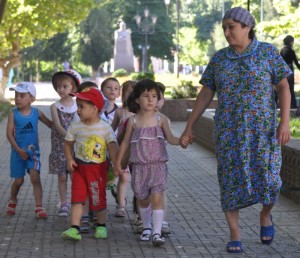 |
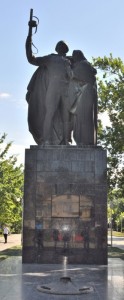 |
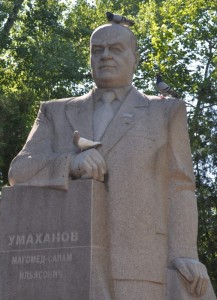 |
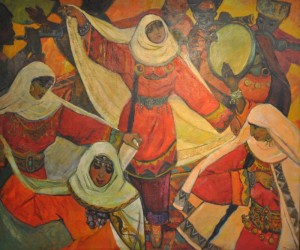 |
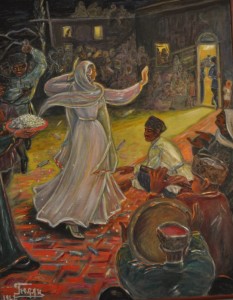 |
We had dinner at the hotel which food and service is far from satisfactory. Our guide took us to a local coffee shop with free Wi-Fi (but very slow). There’s live music and we enjoyed the ambience.
My nightmare began when Kylie and I returned to our room. The beds and pillows were uncomfortable and not clean. I had left my sleeping bag lining and travel pillow at home. I therefore slept without a pillow and used a shawl as a bed sheet. We had to turn on the air-conditioner as it was hot and sticky. It was so noisy that I was awake. At the end, I turned it off and opened the balcony door. I was badly bitten and could not sleep. (In the morning I discovered that a window had a mosquito net. I should have left the window open and the balcony door closed!)
July 9 Tuesday: Excursion to Derbent (260km)
Today’s highlight was the Naryin- Kala Castle, a World Heritage Site in Derbent, the second largest city located just north of Azerbaijan. Derbent has a strategic location and is the primary gateway crossing between the Eurasian steppes to the north and the Middle East to the south through a very narrow coastal crossing between the Caspian Sea and the Caucasus Mountains. Also known as “Gate of Gates” and “Iron Gate”, Derbent claims to be the oldest city in Russia with archaeological structures over 5,000 years old.
A powerful fortress with walls of large stones appeared in Derbent as early as 8th century BC. The present-day citadel Naryn-Kala was built in the 5th – 6th century by Sasanians on the remains of ancient masonry on the Dzhalgansky ridge in order to control traffic between Europe and the Middle East and to protect against raids from nomadic tribes. It was in continuous use by succeeding Persian, Arabic, Mongol and Timurid rulers. Its strategic importance continued until the 19th century.
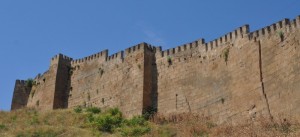 |
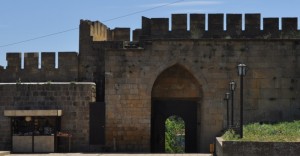 |
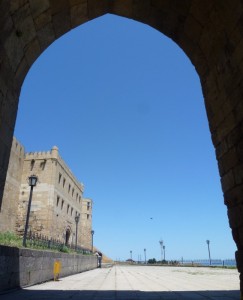 |
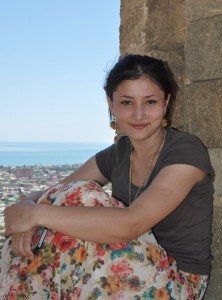 |
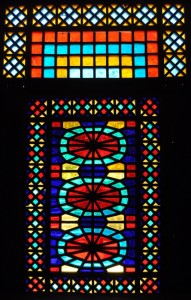 |
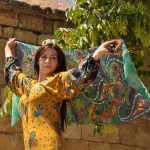 |
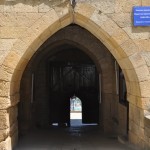 |
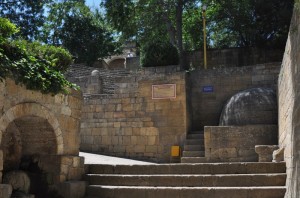 |
The journey took almost three hours. We got in two minibuses in a bus terminal and arrived at the foothill of the citadel. I enjoyed strolling in this massive citadel with irregular, thick and imposing fortress walls. The museum though small is well kept and the Turkish bath house is large and impressive. The ancient stone anchors serve to remind visitors that Derbent was once the largest and most important port in the world!
We had lunch at 2pm in a nice restaurant by the Caspian Sea. I had lamb shashlik which was the best I had on this trip. The beer was icy cold and cheap! After a surprisingly pleasant lunch, we asked George to take us to see the Lenin Square and a 200-years-old Armenian Church which is now a museum.
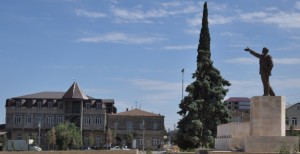 |
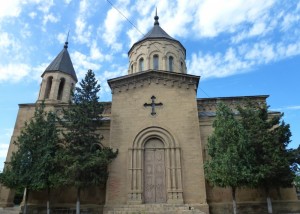 |
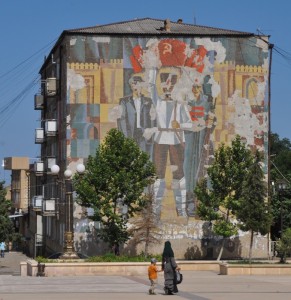 |
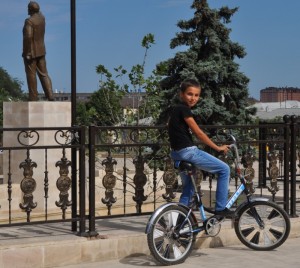 |
When we were back in Makhachkala, we went to a few souvenir shops. I found nothing interesting till I saw a pharmacy. I was looking for hand and body cream made from Siberian plants. Kylie, Fong and I brought some organic products. The service was good but slow. We were late by seven minutes and our coach had gone. Olga and a local guide waited for us and took us back to the hotel using local buses. I mingled with the locals and began to have a feel about the place and the people who looked at us curiously with a friendly smile. The sun was setting and the heat was more bearable.
We had dinner in the hotel and the food was boring. Peter had a row with the restaurant over both the quality and quantity of food. When Peter learnt that the local agent had arranged us to eat there the following day, he was upset and lost his temper. Finally, we got our way and we had a farewell dinner in a pricy local restaurant.
July 10 Wednesday: Excursion to the north
Today, we headed north to see natural scenery. We had a brief photo stop by the roadside with a good view of the Sulak River. At one end we could see the Chirkeiskuy hydro-power plant, the biggest in North Caucasus with the main dam over 250m. There are five hydro-power plants along the 360km-long Sulak River.
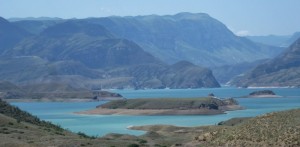 |
Our coach started to go up a winding road and we reached an 800-metre viewpoint at 12:30pm. I was excited to get out of the inferno. We walked for over an hour along the ridge which affords fantastic views of the gorge, eagles and wildflowers. I also saw the Miatlimskaya hydro-power plant.
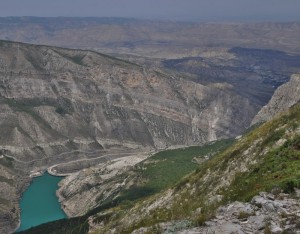
|
There are many villages nestling on the top of the mountain ridges. We arrived in Dubky (meaning small oak trees), a settlement which used to house the workers who built the dam. We had a big lunch including chicken and hinkal i.e. boiled dough and beef with yogurt and garlic sauce; caudu (flannel cake with cheese or beef or herbs), churek (local bread) and borsh. The food is wholesome, simple but delicious. I am glad that we had lunch there as this would provide some income for the local families that prepared our lunch.
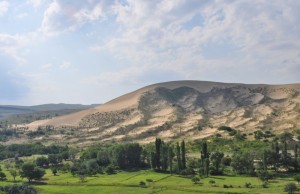 |
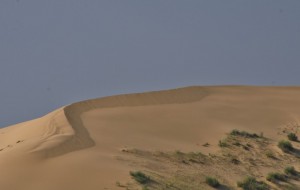 |
One the way back to the city, we stopped at the Sarykum Sand Desert region which is part of a nature reserve. The massive sand dune measures some 10km long and 3-4 km wide. Climbing is forbidden. The flora and fauna in this reserve are known for their remarkable diversity.
Thanks to Peter’s effort, we had a fantastic farewell dinner in a classy restaurant with excellent service and food. The salad was nice and fresh; the lamb and chicken shashlik was delicious. We tried several fresh fruit juices. A musician played a guitar and several dancers performed their traditional dance. I had an enjoyable evening.
July 11 Thursday: Makhachkala
We checked out after breakfast and spent over an hour in the enormous and vibrant central market. Most local stall keepers were excited to see strangers swarming in. Some were shy and refused to let us take pictures. After a while, they came up and asked me to take portraits or group photos for them and their family. I had a wonderful time!
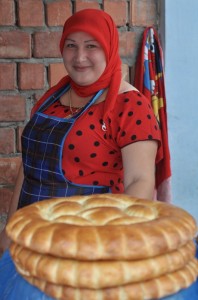 |
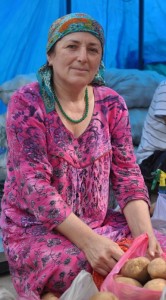 |
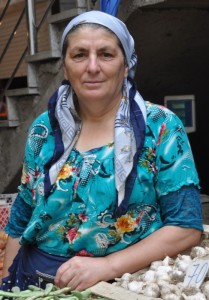 |
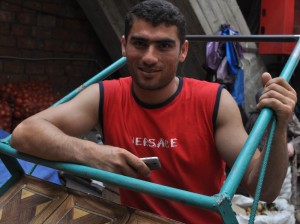 |
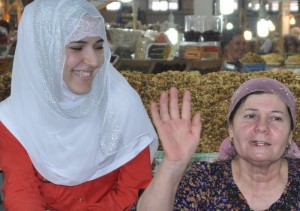 |
The group would be departing for Moscow around 5pm while I would take a 5am – flight the following day. Madina kindly invited me to stay with her. I accepted her invitation with gratitude as I did not want to spend another night in that horrible hotel.
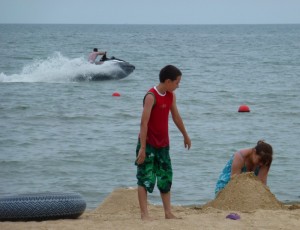 |
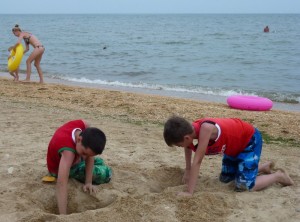 |
The local agent arranged us to have a farewell lunch at the Djemi Hotel, a luxurious resort (by local standard) by the Caspian Sea. Peter treated us with black caviar and vodka. I had over-eaten and hardly touched the grilled sturgeon fish and lamb. At 1:15pm, I saw the group off to the airport and took a taxi with Medina to her flat in a popular suburb. (The group’s flight was delayed and they did not arrive at their hotel till 10pm.)
Madina lives in a 70-m² flat with a modern kitchen and bathroom, a toilet, a living room with a sofa bed and a bedroom. We sat in the kitchen chatting for a couple of hours. She told me about her family and herself. She is a Christian and her interest in the Japanese language has brought her to Tokyo. She has lived there for three years and told me her extraordinary experience and love for her native land. Though we had only chatted for three hours, I felt I had known her for a long time!
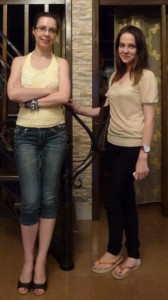 |
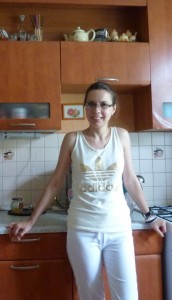 |
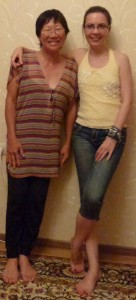 |
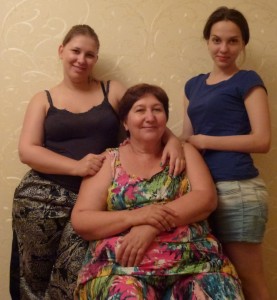 |
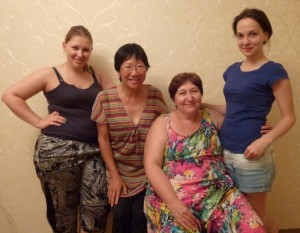 |
When the torching sun had gone, she showed me around and we had a coffee in a nice café. Then we went with her godmother’s 17-year-old daughter to a local restaurant for dinner. Medina ordered several local dishes, all of which I had not eaten before. After dinner, she took me to her Godmother’s house located in the oldest part of the city close to the port.
I was delighted to meet Madina’s godmother, her daughter and son-in-law. She had baked a cake and I had a huge piece! It is the local custom for women and men to gather in separate rooms. I had a nice time chatting with the ladies about their cat, turtles and work. They were expecting some friends and would have a late supper. They go to bed after midnight and get up late: this is their lifestyle. I am impressed by their simplicity, cheerfulness and hearty smiles. I wish I could have met more locals and gained better understanding about their life and the republic.
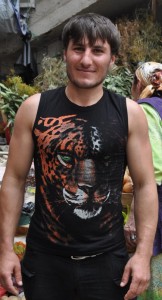 |
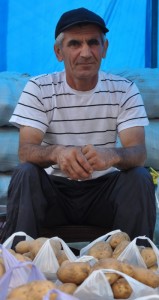 |
July 12 Friday: Makhachkala, Dagestan – Moscow – Hong Kong
I only slept for three hours and got up at 3am. Madina arranged a taxi to pick up me around 3:30am saying that the journey to the airport would take 40 minutes. But it only took 15 minutes and I checked in before 4am! As I did not have luggage, I could have left her place at 4am! Everything was smooth: my flight took off at 5am and I was at the DME Airport before 8am.
I took the airport express and arrived at the city before 10am. My original plan was to go to the Pushkin Museum of Fine Art. But I got off at the wrong metro station. I took things easy and strolled leisurely in the Arbat and the Red Square. The weather was good and the old buildings along the Arbat pedestrian street and the leafy side streets. I also spent visited a few metro stations which are famed for their sculptures and monuments.
I arrived at the Metropol Hotel before midday to meet up with the group. There was not much traffic on the road and we arrived at the DME Airport at 2pm. The airport was surprisingly busy. The CX flight to Hong Kong was full and the plane took off around 5pm. I was back in Hong Kong at 6:30am on July 13 ending my one-month travel in Russia.
Epilogue
I spent a month in Russia last year and another month this year. I definitely find my trip to Kamchatka in 2012 more interesting and exciting. The river cruise from St Petersburg to Moscow and the 14-day overland journey in North Caucasus are uneventful by my standard i.e. no mishap or hardship. I have already set out my remarks on the river cruise. My friends have asked me what I have seen in North Caucasus and whether it is worth visiting.
The trip to North Caucasus is not cheap (over USD3500 including airfare) by my standard especially if one takes into account the generally poor standard of services in Russia. But the journey has been an excellent way to bring me closer to the place and the people.
First, this region has been known as dangerous and tourists are advised not to go.While there are numerous check-points and we were not allowed to take pictures in the Central Market in Vladikavkaz, government buildings in Vladikavkaz and Grozny and at the border and check-points, I did not feel threatened or unsafe during the entire journey. The armed police/officers though looked serious, were polite.
Second, I hardly knew about this region apart from terrorist acts by the Chechens Moscow in 1992 and in North-Ossetia in 1994 and the two ensuingChechen Wars. I am glad to have a chance to hear the local history from our guides and learn about the sad history and suffering of the Ingush and Chechens and the dynamics and complexity of the ethnic groups in these four republics. I still do not have a comprehensive understanding about this complicated region. But while we cannot forget history, I hope people who have suffered can forgive and move on. Terrorism brings harm to the innocent people and can only breed further distrust and enmity.
Third, I love mountains and North Caucasus is unique and beautiful. Its rich cultural heritage and great varieties of ethnical groups have great potential for tourism. This region is poor and less developed as compared with other parts of Russia and tourism development can indeed bring economic benefits as well as more contacts with the outside world. Unfortunately, the region has been unstable and there are too many inherent problems amongst the republics and the various ethnic groups. Unless there is peace, willingness and commitment to co-operate on a regional basis, it is not easy for tourism to flourish in this region. The main road network linking the four republics and the road south to Azerbaijan is fine. While there are some decent hotels in Vladikavkaz and Grozny, I cannot say the same for Ingushetia and Dagestan. As a whole tourism infrastructures are underdeveloped: the services at hotel, restaurants and ancillary facilities seem to stay at the Soviet era.
Fourth, I am most impressed by Ingushetia. The mountains, the scenery and the well-preserved combat towers are atmospheric and must-see. Though the local guide Lahan does not speak English, I am impressed by his sincerity, simplicity of mountain folks, knowledge and passion for his country.I love to spend a week hiking in this area and to visit the sacred sanctuary Myat-Loam on Stolovaya Mountain on summer solstice.
Finally, this 14-day trip would be uneventful had it not been for the people I have met.
-Olga the coordinator of our trip from Vladivostok is a most soft-spoken Russian lady I have met. She speaks English with an English accent. I am impressed by her graceful manner and gentle soothing voice which are not common in Russia.
-I am grateful of Val for guiding me during the walk the ridge at the glacier in North-Ossetia and for taking pictures for me. He is a passionate climber and I hope he can realise his dream to climb the world’s challenging peaks.
-I am impressed by Lahan’s passion for the mountains and hope to return one day taking him as my guide.
-Chechnya’s future is in the hands of young and promising Chechens and I am glad to have met a few remarkable young Chechens. Adam, Abraham and Ediner have told me about their life and upbringing giving me a glimpse of the life and culture of the young Chechens. The tour of the Khoi Village and the talk by village head unveiled the horrible and unforgettable events in February 1944 when the Ingush and Chechens were exiled to Central Asia and Siberia. The chat with the famous artist Iles Tataev who survived the exile to become a famous Russian director and artist has given me hope: he loves both Russia and his nation and he talks about art and love.
-I hardly had any impression of Dagestan till I had Madina who invited me to stay in her flat after the group left on July 11. As she has spent three years in Japan and we both enjoy travelling and meet people, we have a lot in common! She has taken me to see her godmother and family. Suddenly, I had a quick glimpse of Dagestan and its culture as well as the daily life of the people. I have seen more on the day with Madina than the three days’ sight-seeing in Dagestan. I have invited Madina to visit Hong Kong and stay with me. I hope we shall meet again one day.


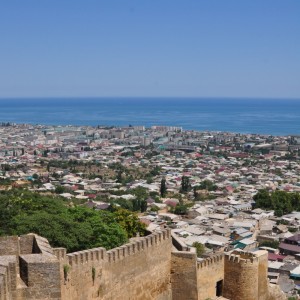
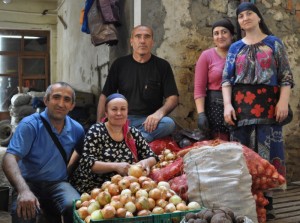
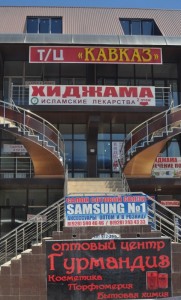
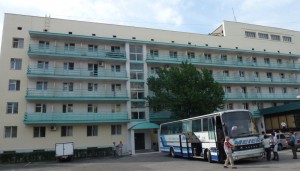
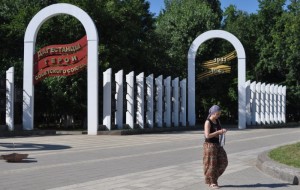
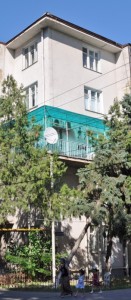
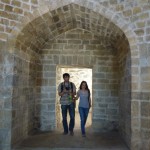
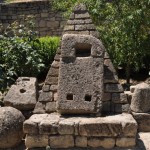
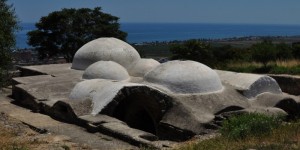
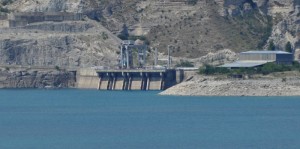
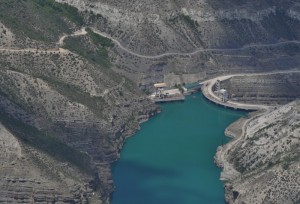
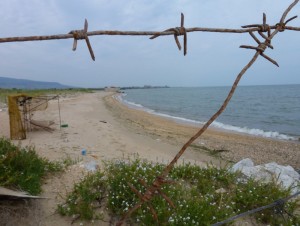
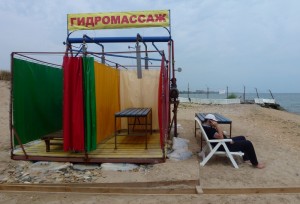
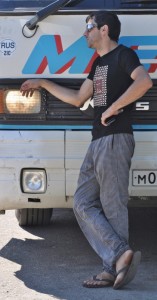
Hello, Sarah!!! Thank you very much for your kind words. I was really glad to read your post about your visit to us and to other Caucasus republics. Thank you for your invitation, I hope I’ll be able to accept it next summer, if you don’t mind. Hope to keep in touch with you and I invite you to me any time you want.